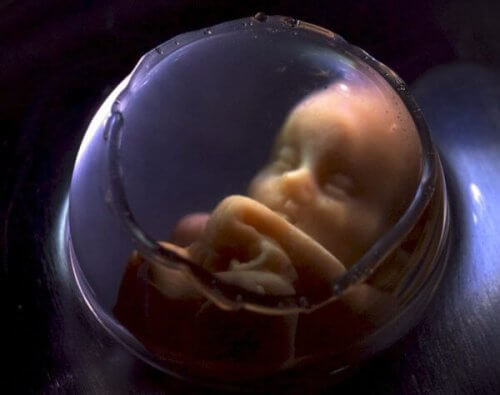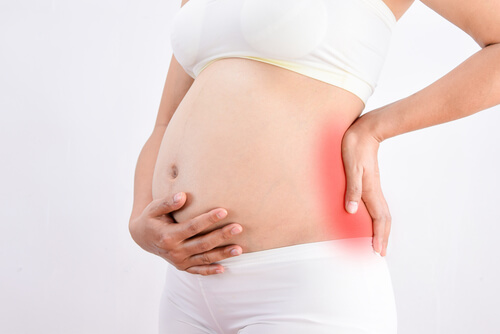How to Recognize that You're Going into Labor

How can you tell when you’re having contractions? Many first-time mothers fear they won’t be able to recognize when they’re going into labor.
What’s more, many women experience another type of contraction before this point.
These contractions prepare the mother’s body for the arrival of her child, but aren’t a signal that your baby is ready to be born. As a result, these contractions confuse many mothers and place them on constant alert.
Here we want to help you differentiate between the various kinds of contractions you can experience during pregnancy.
Signs that it’s time to give birth:
The so-called prodromal phase is the final phase of pregnancy before childbirth. During this period, the body gets ready for expulsion, or childbirth.
It’s very important to recognize that your body is in this phase, as it indicates you’re going into labor. Of course, if you’re a first-time mother, this phase can last several days.
Below are some of the signs that your body is in the prodromal phase:
Release of the mucus plug
The mucus plug is a barrier that protects the mother‘s womb from infection. Here’s how to know when your body has released your mucus plug:
- Intense vaginal fluid that lasts for several days. This fluid is similar to egg white.
- Intense yellowish vaginal secretions with a gelatin consistency.
- Blood-stained fluid; it may be brown, red, pink, etc.
- A gelatin-like clump that may contain traces of blood.
Your mucus plug may appear up to 10 days before the birth of your baby. Nevertheless, it’s an indication that you’re in the final phase of pregnancy.

Water breaking
Another sign that your baby’s arrival is nearing is water breakage. This is the release of the amniotic fluid that your baby has been floating around in inside the amniotic sac.
It often feels like you have wet your pants. You might release a lot of liquid at once, or you might release a little at a time.
Contractions
When you’re going into labor, you’ll begin to feel contractions. They may not necessarily be regular or even very painful at first.
However, as the day goes on, they’ll become more intense. The characteristics of childbirth contractions are the following:
- They may be irregular at first, but they’ll become stronger and more rhythmic over time.
- They’ll come to appear every 5 minutes and last about 50 seconds.
- Pain will increase almost constantly.
- The pain won’t go away, no matter what position you choose.
Dilation
The dilation of your cervix will reach 1-2 inches. Of course, this is a sign that you cannot detect on your own. Rather, your OB/GYN will be able to detect your level of dilation.
Contractions versus false labor
It’s very common to start to feel contractions and believe that your baby is coming at any minute – especially if you’re a first-time mom!
It’s okay, you’re new at this. To help you clear up any doubts, we want to share with you some of the main characteristics of false labor:
- The contractions are irregular.
- There is no increase in the frequency and intensity of the contractions.
- The contractions tend to come and go with long periods of time between one another.
- A slight pain appears in the lower abdomen.
But what do real labor contractions feel like?
It’s hard to explain what it feels like when you’re having a real contraction. There are many factors that influence what it feels like, such as the position of your baby. The feeling is different for each woman.
The moment in which the contraction appears also determines what you will feel. This is because contractions change as labor advances.
First of all, you’ll begin to notice that your belly gets progressively harder. It will reach a certain point, and then go back to its normal state. This will happen over and over again.
If you notice that your belly becomes hard, you might also notice that your uterine walls become tense. This will make it easier to feel your baby’s movements.
The first contractions won’t last more than 30 seconds, and several minutes may go by before you feel another
Depending on the baby’s position, each mother will feel the pain of her contractions differently. Below we’ll explain the different types of contractions you might experience:

- Intense cramping
If you experience menstrual pain, then you know what we’re talking about. However, the cramps that come with labor contractions will be much stronger than what you’re used to.
Some mothers claim that it’s like having menstrual pain accompanied by a cramping sensation and stomach pain.
- Pain in your hips and back
This kind of contraction is common for mothers whose babies are positioned against her back. In other words, your baby’s back is resting against your own back.
Mothers who experience these contractions say it’s as if their hips were stretching away from their backs. Don’t worry, your hips aren’t going to come loose – it’s just a sensation!
- Tolerable pain.
Yes, that’s right. Tolerable pain. Some mothers are very afraid of giving birth because they fear the pain will be too much. When the time comes, they expect the pain to grow worse and worse.
However, when it’s all over, they often say that it wasn’t as bad as they expected. Rather, the pain was tolerable.
We hope this information will help you know when you’re going into labor, and when you are not.
If you have any doubts when the time comes, your doctor will be able to answer your questions and tell you exactly what’s going on.
All cited sources were thoroughly reviewed by our team to ensure their quality, reliability, currency, and validity. The bibliography of this article was considered reliable and of academic or scientific accuracy.
- Brown, H. Trabajo de parto. Manual MSD- Versión para público general. [En línea].
- ¿Cuáles son las etapas del trabajo de parto?– NIH Eunice Kennedy Shriver National Institute of Child Health and Human Development.
This text is provided for informational purposes only and does not replace consultation with a professional. If in doubt, consult your specialist.








